Severe overcrowding and a lack of exits contributed to a stampede at a religious festival in northern India, authorities said yesterday, leaving at least 121 people dead as the faithful surged toward the preacher to touch him and chaos ensued.
Five died yesterday morning and 28 people were still being treated in a hospital, local official Manish Chaudhry said.
Deadly stampedes are relatively common at Indian religious festivals, where large crowds gather in small areas with shoddy infrastructure and few safety measures.
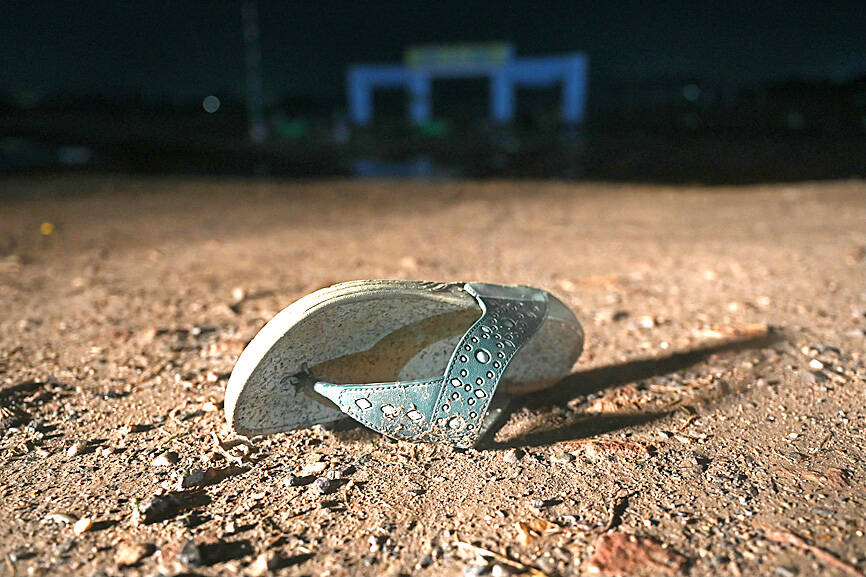
Photo: AFP
About a quarter of a million people turned up for the event on Tuesday that was permitted to accommodate only 80,000. It is not clear how many made it inside the giant tent set up in a muddy field in a village in Hathras District in Uttar Pradesh.
It was also not clear what sparked the panic.
However, Chief Minister of Uttar Pradesh Yogi Adityanath told reporters that a crowd rushed toward the preacher to touch him as he was descending from the stage and volunteers struggled to intervene.
An initial report from the police suggested that thousands of people then thronged the exits and many slipped on the muddy ground, causing them to fall and be crushed in the crowd.
Most of the dead were women.
The chaos also appeared to continue outside the tent, as followers again ran toward the preacher, a Hindu guru known locally as Bhole Baba, as he left in a vehicle. His security personnel pushed the crowd back, causing more people to fall, officials said.
Authorities are investigating and searching for the preacher as well as other organizers, whose whereabouts were not known.
Adityanath said he ordered an inquiry by a retired judge into the deaths.
Indian police registered a case of culpable homicide against two organizers, but excluded the preacher. Culpable homicide carries a maximum punishment of life imprisonment in India.
Binod Sokhna, who lost his mother, daughter and wife, wept as he walked out of a morgue yesterday.
“My son called me and said: ‘Papa, Mother is no more. Come here immediately.’ My wife is no more,” he said.
Followers of the guru from across the state — which is India’s most populous with more than 200 million people — traveled to the village, with rows of parked vehicles stretching 3km.
State official Ashish Kumar said there were insufficient exits in the vast tent.
It is not clear how many exits there were.
Experts said the event violated safety norms.
“The function was held in a makeshift tent without ensuring multiple exit routes,” disaster management expert Sanjay Srivastava said.
On Tuesday, hundreds of relatives had gathered at local hospitals, wailing in distress at the sight of the dead, placed on stretchers and covered in white sheets on the grounds outside. Buses and trucks also carried dozens of victims to morgues.
Sonu Kumar was one of many local residents who helped lift and move dead bodies after the disaster. He criticized the preacher.
“He sat in his car and left. And his devotees here fell one upon another,” Sonu Kumar said.
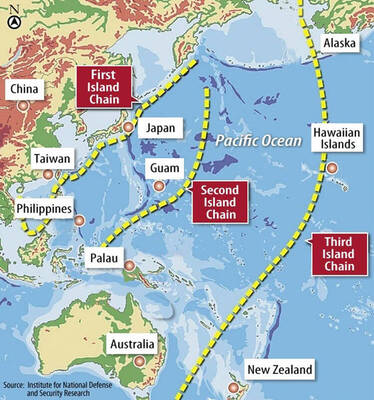
The US government has signed defense cooperation agreements with Japan and the Philippines to boost the deterrence capabilities of countries in the first island chain, a report by the National Security Bureau (NSB) showed. The main countries on the first island chain include the two nations and Taiwan. The bureau is to present the report at a meeting of the legislature’s Foreign Affairs and National Defense Committee tomorrow. The US military has deployed Typhon missile systems to Japan’s Yamaguchi Prefecture and Zambales province in the Philippines during their joint military exercises. It has also installed NMESIS anti-ship systems in Japan’s Okinawa
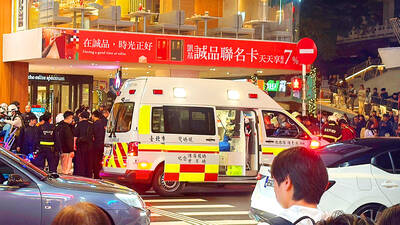
TRAGEDY STRIKES TAIPEI: The suspect died after falling off a building after he threw smoke grenades into Taipei Main Station and went on a killing spree in Zhongshan A 27-year-old suspect allegedly threw smoke grenades in Taipei Main Station and then proceeded to Zhongshan MRT Station in a random killing spree that resulted in the death of the suspect and two other civilians, and seven injured, including one in critical condition, as of press time last night. The suspect, identified as a man surnamed Chang Wen (張文), allegedly began the attack at Taipei Main Station, the Taipei Fire Department said, adding that it received a report at 5:24pm that smoke grenades had been thrown in the station. One man in his 50s was rushed to hospital after a cardiac arrest
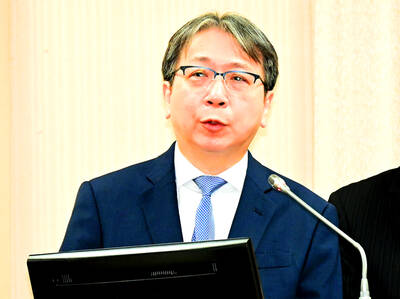
ON ALERT: Taiwan’s partners would issue warnings if China attempted to use Interpol to target Taiwanese, and the global body has mechanisms to prevent it, an official said China has stationed two to four people specializing in Taiwan affairs at its embassies in several democratic countries to monitor and harass Taiwanese, actions that the host nations would not tolerate, National Security Bureau (NSB) Director-General Tsai Ming-yen (蔡明彥) said yesterday. Tsai made the comments at a meeting of the legislature’s Foreign Affairs and National Defense Committee, which asked him and Minister of National Defense Wellington Koo (顧立雄) to report on potential conflicts in the Taiwan Strait and military preparedness. Democratic Progressive Party (DPP) Legislator Michelle Lin (林楚茵) expressed concern that Beijing has posted personnel from China’s Taiwan Affairs Office to its
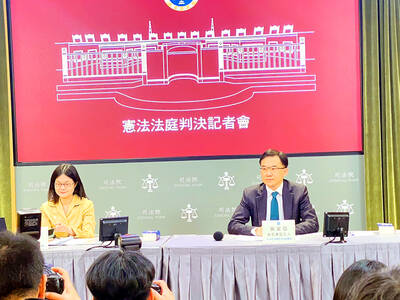
‘ILLEGAL RULING’: The KMT and the TPP slammed the Constitutional Court judgement, saying it contravened the law and was trying to clear the way for a ‘green dictatorship’ The Constitutional Court yesterday ruled that amendments to the Constitutional Court Procedure Act (憲法訴訟法) passed by the Legislative Yuan last year are unconstitutional, as they contravene due legislative process and separation of powers. The Legislative Yuan on Dec. 20 last year passed amendments stipulating that no fewer than 10 grand justices must take part in deliberations of the Constitutional Court, and at least nine grand justices must agree to declare a law unconstitutional. The Executive Yuan on Jan. 2 requested that lawmakers reconsider the bill, but the Legislative Yuan, under a combined majority of Chinese Nationalist Party (KMT) and Taiwan People’s Party